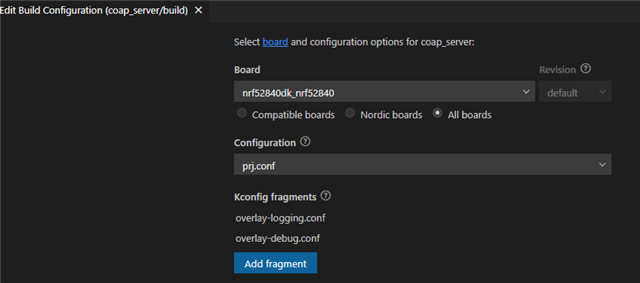Hi,
I want to develop a nRF52840 based device to function as a REED device. Is there an example project that I can use as a starting point?
Cheers,
Kaushalya
Hi,
I want to develop a nRF52840 based device to function as a REED device. Is there an example project that I can use as a starting point?
Cheers,
Kaushalya
Hi Kaushalya,
Do you actually mean Router Eligible End Device? See Node Roles and Types | OpenThread.
If yes, you can refer to the discussion in this case (+) OpenThread just FTD - Nordic Q&A - Nordic DevZone - Nordic DevZone (nordicsemi.com)
Best regards,
Charlie
Hi Kaushalya,
Do you actually mean Router Eligible End Device? See Node Roles and Types | OpenThread.
If yes, you can refer to the discussion in this case (+) OpenThread just FTD - Nordic Q&A - Nordic DevZone - Nordic DevZone (nordicsemi.com)
Best regards,
Charlie
Hi Charlie,
My intention is to have a mesh network of multiple sleepy end devices. I need a way to facilitate a jump from a remote sleepy end device to the leader via a REED. I want the routing to use as less power as possible.
The discussion you points doesnt come to a conclusion, as far as I can see. So could you please point me to any example project that I can use as a starting point?
Thanks,
Kaushalya
Hi Charlie,
I removed the overlay_mtd.conf from my Sleepy End Device (SED), hoping this would make it a FTD. I can see the current consumption has gone up considerably. When I moved one of my SEDs outside the range of my leader, I was hoping that the FTD will act as a router and route the SED to my leader. But when I check from my thread topology viewer, I cant see that. I can see the FTD but the SED is gone.
1. How can I verify an FTD in your network?
2. How can we observe the role switching of a FTD from End device to a router or REED?
3. The topology monitor cant seem to get the ext address from a SED. Is there a way to do it?
Cheers,
Kaushalya
Hi Kaushalya,
Sorry for the late reply, I am just back from travelling. Let me answer your questions one by one.
kaushalyasat said:I need a way to facilitate a jump from a remote sleepy end device to the leader via a REED. I want the routing to use as less power as possible.
There is not so much we can do on power efficiency with the existing OpenThread network, a developer can only pick up a device type for their device based on the current definition.
If it is a battery-powered device like a light switch, you need to build your OT device as MTD.
If it is a cable-powered device, you can set it to FTD, and it then works as either a router or lead with TX and RX radio always on.
Maybe you can talk more about your application and let's see if OpenThread can fit your needs.
kaushalyasat said:1. How can I verify an FTD in your network?
It Is the developer who decides if their device should be used for FTD or MTD when you build a device.
kaushalyasat said:2. How can we observe the role switching of a FTD from End device to a router or REED?
You can observe the role change from the log printout, like the following from Thread: CoAP Server — nRF Connect SDK 2.3.0 documentation (nordicsemi.com) sample.
<inf> [N] Mle-----------: Role detached -> child <inf> [N] Mle-----------: Role child -> detached <inf> [N] Mle-----------: Role detached -> router

kaushalyasat said:3. The topology monitor cant seem to get the ext address from a SED. Is there a way to do it?
The thread samples have OpenThread CLI commands enabled, so you can connect with any UART assistant software like Putty and run "ot extaddr" to get the device ext address.

Best regards,
Charlie
Hi Charlie,
Many thanks for your reply. Hope you had a good break.
I have build one CoAP client as a FTD device and it seems to be working as a router. AFAIK both a router and a REED can perform this routing role for me (correct me if I am wrong). If so, I think I would prefer a REED rather than a router for my application, which is a battery powered sensor. So if no routing role is required it could be working as a end devise (MED?).
1. This is why I am more interested in REEDs. But so far I could not find a way to configure a FTD as a REED. Is there a way?
2. So as a developer, I can only configure a device to be a FTD or a MED?
3. The question is for the ext addr to be read through the Thread Topology Monitor. In my case there are many Sleepy End Devices scattered all around a building and it is not practical to connect a Putty terminal to each. Thats why I want to know if the Thread Topology Monitor can read the Ext Addr of SEDs connected to the network.
Cheers,
Kaushalya